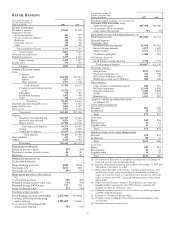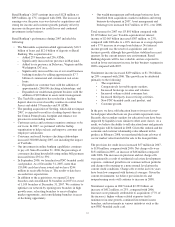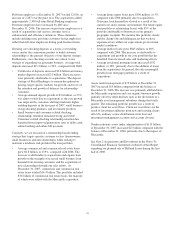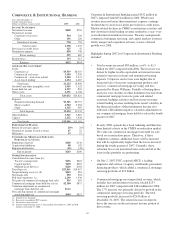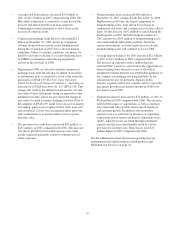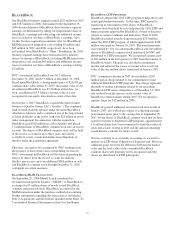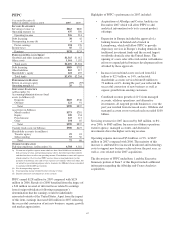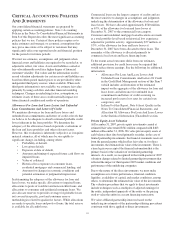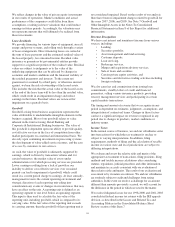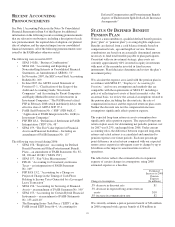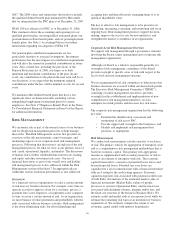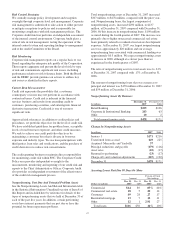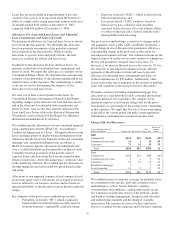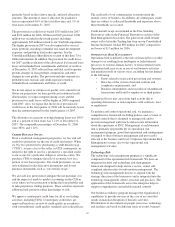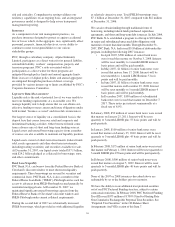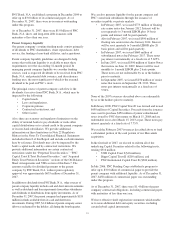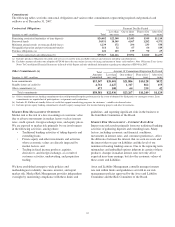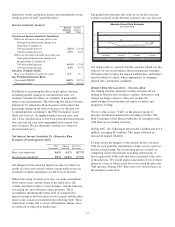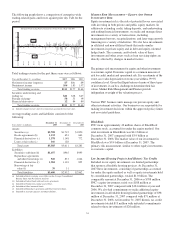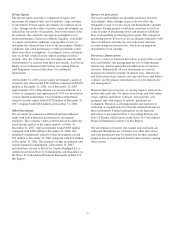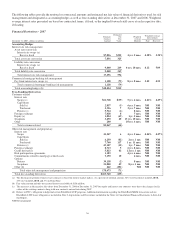PNC Bank 2007 Annual Report Download - page 51
Download and view the complete annual report
Please find page 51 of the 2007 PNC Bank annual report below. You can navigate through the pages in the report by either clicking on the pages listed below, or by using the keyword search tool below to find specific information within the annual report.2007. The 2008 values and sensitivities shown above include
the qualified defined benefit plan maintained by Mercantile
that we integrated into the PNC plan as of December 31, 2007.
SFAS 158 was effective for PNC as of December 31, 2006.
This statement affects the accounting and reporting for our
qualified pension plan, our nonqualified retirement plans, our
postretirement welfare benefit plans, and our postemployment
benefit plans. See Note 1 Accounting Policies for further
information regarding our adoption of SFAS 158.
Our pension plan contribution requirements are not
particularly sensitive to actuarial assumptions. Investment
performance has the most impact on contribution requirements
and will drive the amount of permitted contributions in future
years. Also, current law, including the provisions of the
Pension Protection Act of 2006, sets limits as to both
minimum and maximum contributions to the plan. In any
event, any contributions to the plan in the near term will be at
our discretion, as we expect that the minimum required
contributions under the law will be minimal or zero for several
years.
We maintain other defined benefit plans that have a less
significant effect on financial results, including various
nonqualified supplemental retirement plans for certain
employees. See Note 17 Employee Benefit Plans in the Notes
To Consolidated Financial Statements in Item 8 of this Report
for additional information.
R
ISK
M
ANAGEMENT
We encounter risk as part of the normal course of our business
and we design risk management processes to help manage
these risks. This Risk Management section first provides an
overview of the risk measurement, control strategies, and
monitoring aspects of our corporate-level risk management
processes. Following that discussion is an analysis of the risk
management process for what we view as our primary areas of
risk: credit, operational, liquidity, and market. The discussion
of market risk is further subdivided into interest rate, trading,
and equity and other investment risk areas. Our use of
financial derivatives as part of our overall asset and liability
risk management process is also addressed within the Risk
Management section of this Item 7. In appropriate places
within this section, historical performance is also addressed.
O
VERVIEW
As a financial services organization, we take a certain amount
of risk in every business decision. For example, every time we
open an account or approve a loan for a customer, process a
payment, hire a new employee, or implement a new computer
system, we incur a certain amount of risk. As an organization,
we must balance revenue generation and profitability with the
risks associated with our business activities. Risk management
is not about eliminating risks, but about identifying and
accepting risks and then effectively managing them so as to
optimize shareholder value.
The key to effective risk management is to be proactive in
identifying, measuring, evaluating, and monitoring risk on an
ongoing basis. Risk management practices support decision-
making, improve the success rate for new initiatives, and
strengthen the market’s confidence in an organization.
Corporate-Level Risk Management Overview
We support risk management through a governance structure
involving the Board, senior management and a corporate risk
management organization.
Although our Board as a whole is responsible generally for
oversight of risk management, committees of the Board
provide oversight to specific areas of risk with respect to the
level of risk and risk management structure.
We use management level risk committees to help ensure that
business decisions are executed within our desired risk profile.
The Executive Risk Management Committee (“ERMC”),
consisting of senior management executives, provides
oversight for the establishment and implementation of new
comprehensive risk management initiatives, reviews
enterprise level risk profiles and discusses key risk issues.
The corporate risk management organization has the following
key roles:
• Facilitate the identification, assessment and
monitoring of risk across PNC,
• Provide support and oversight to the businesses, and
• Identify and implement risk management best
practices, as appropriate.
Risk Measurement
We conduct risk measurement activities specific to each area
of risk. The primary vehicle for aggregation of enterprise-wide
risk is a comprehensive risk management methodology that is
based on economic capital. This primary risk aggregation
measure is supplemented with secondary measures of risk to
arrive at an estimate of enterprise-wide risk. The economic
capital framework is a measure of potential losses above and
beyond expected losses. Potential one year losses are
capitalized to a level commensurate with a financial institution
with an A rating by the credit rating agencies. Economic
capital incorporates risk associated with potential credit losses
(Credit Risk), fluctuations of the estimated market value of
financial instruments (Market Risk), failure of people,
processes or systems (Operational Risk), and income losses
associated with declining volumes, margins and/or fees, and
the fixed cost structure of the business (Business Risk). We
estimate credit and market risks at an exposure level while we
estimate the remaining risk types at an institution or business
segment level. We routinely compare the output of our
economic capital model with industry benchmarks.
46


